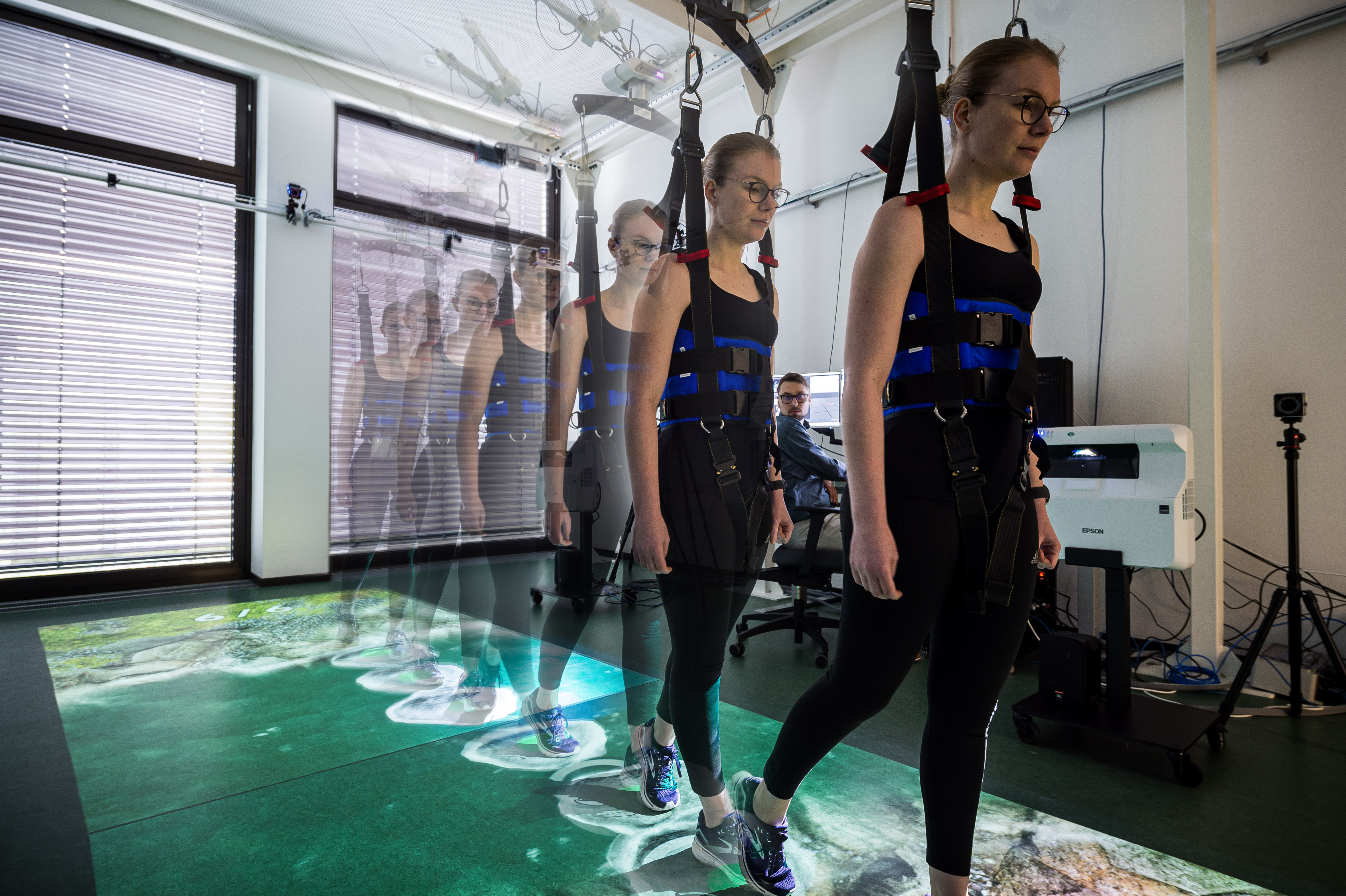Movement Reimagined – Using AI for Better Rehabilitation
In the AI-Motion Labs, movement is captured, analyzed, and therapy-oriented using the latest sensors and artificial intelligence. The goal is individualized, technology-assisted rehabilitation with transferable relevance to everyday life.
The AI-Motion Labs at Fraunhofer IMTE represent a highly specialized research environment for capturing, analyzing, and interpreting human movements – with a focus on medical rehabilitation and therapy-assisted technologies. In close cooperation with the University of Lübeck, two labs have been set up, equipped with a perturbation treadmill and a 3D rope robot for body weight unloading.
The systems interact in a virtual reality environment and enable automated movement analysis using specialized camera technology. The sensor data captured are converted into digital body models, which are evaluated using artificial intelligence techniques to identify patterns, deviations, and therapy outcomes.
A central goal is to transfer robotic-assisted assistance systems into the rehabilitation routine. While many data-driven systems already exist in clinical research, robust approaches to interpreting the data collected are often lacking. This is where the AI-Motion Labs come into play: by combining analytical biomechanical models and data-driven AI systems, therapy efficiency can be enhanced and individualized.
